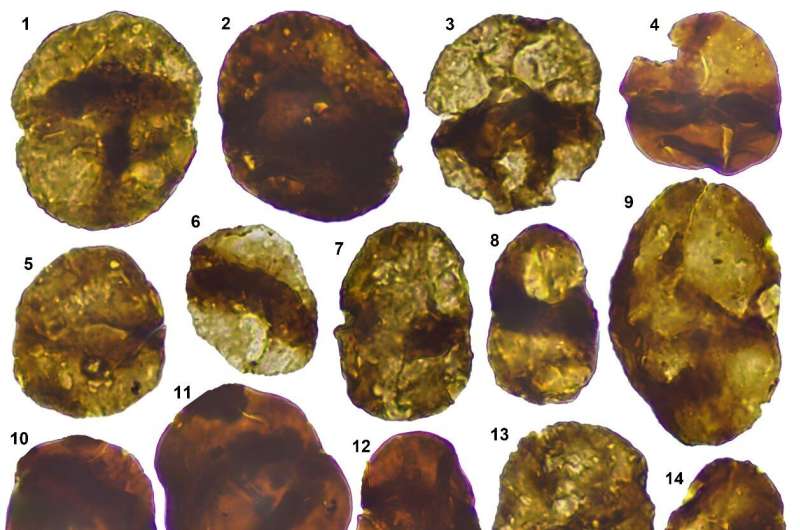This article has been reviewed according to Science X's editorial process and policies. Editors have highlighted the following attributes while ensuring the content's credibility:
fact-checked
trusted source
proofread
Investigating early land plant microfossils from the lower Silurian of southern Xinjiang, China

The Middle Ordovician-early Silurian is the key period for the origin and early evolution of morphological innovations of land plants. It is widely accepted that the earliest unambiguous fossil evidence of land plants can be traced to Dapingian-Darriwilian stages of the Middle Ordovician (ca.468–463Ma), which is represented by dyads and tetrahedral tetrads from the Gondwana paleo-continent.
Recently, a research group led by Prof. Xu Honghe from the Nanjing Institute of Geology and Paleontology of the Chinese Academy of Sciences (NIGPAS) has conducted a synthetic study on palynological flora from the Llandoverian (early Silurian) Kalpintag Formation of the Tarim Basin, southern part of Xinjiang, China. The findings were published in the Journal of Asian Earth Sciences.
Land plant microfossils revealed from the Kalpintag Formation mainly consist of cryptospores, with only a few tubes and cuticle-like sheets, no trilete spores in current collection. The Kalpintag cryptospore-producing plants largely inherited, with slight variation, from their predecessors during the Late Ordovician ages.
Differing from other typical early Silurian sporomorph assemblages in China, the Kalpintag cryptospores do not lack dyads, and instead they are dominated by Dyadospora and Pseudodyadospora. Thus, it can be considered that the dyad-producing plants were once the dominant among early non-vascular land plants in the Tarim paleoterrain.
Based on taxonomic comparisons of global coeval sporomorph records and quantitative analyses (Cluster Analysis and Nonmetric Multidimensional Scaling Analysis), the study found that the Kalpintag cryptospores showed a closer relation to those in northern Chad, northeastern Libya, and central Saudi Arabia.
"The biogeographical zonation of sporomorphs might emerge in the Llandovery, during which the Tarim Plate was likely proximal to western Gondwana in paleogeography," said Prof. Xu.
More information: Kai Wang et al, A palynoflora of southern Xinjiang, China, and the proximity of the Tarim Plate to western Gondwana during the Llandovery (Silurian), Journal of Asian Earth Sciences (2023). DOI: 10.1016/j.jseaes.2023.105769
Provided by Chinese Academy of Sciences





















